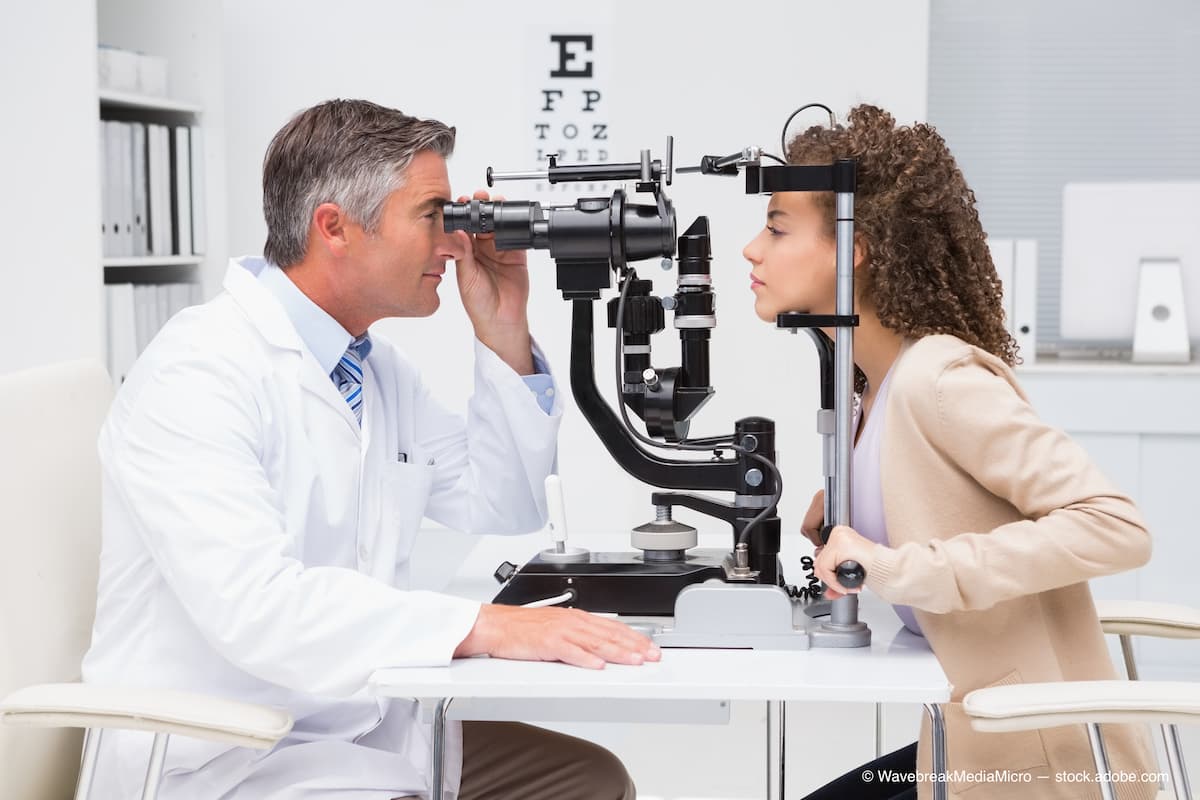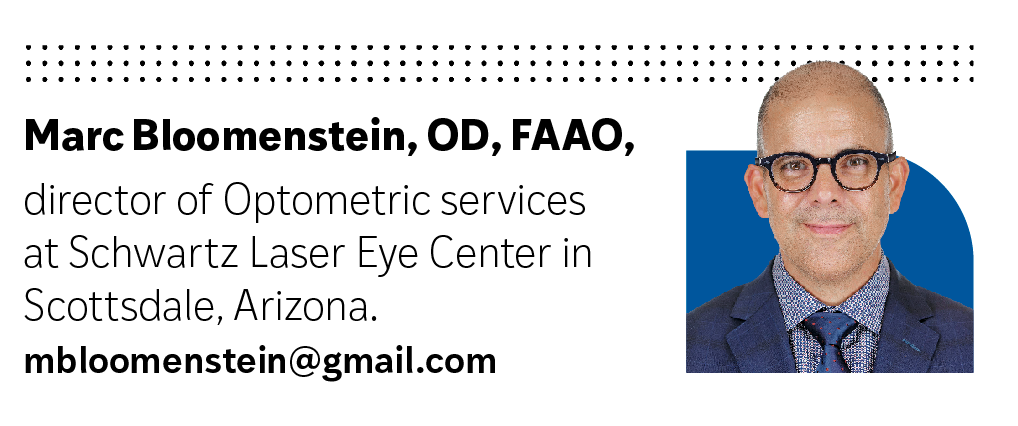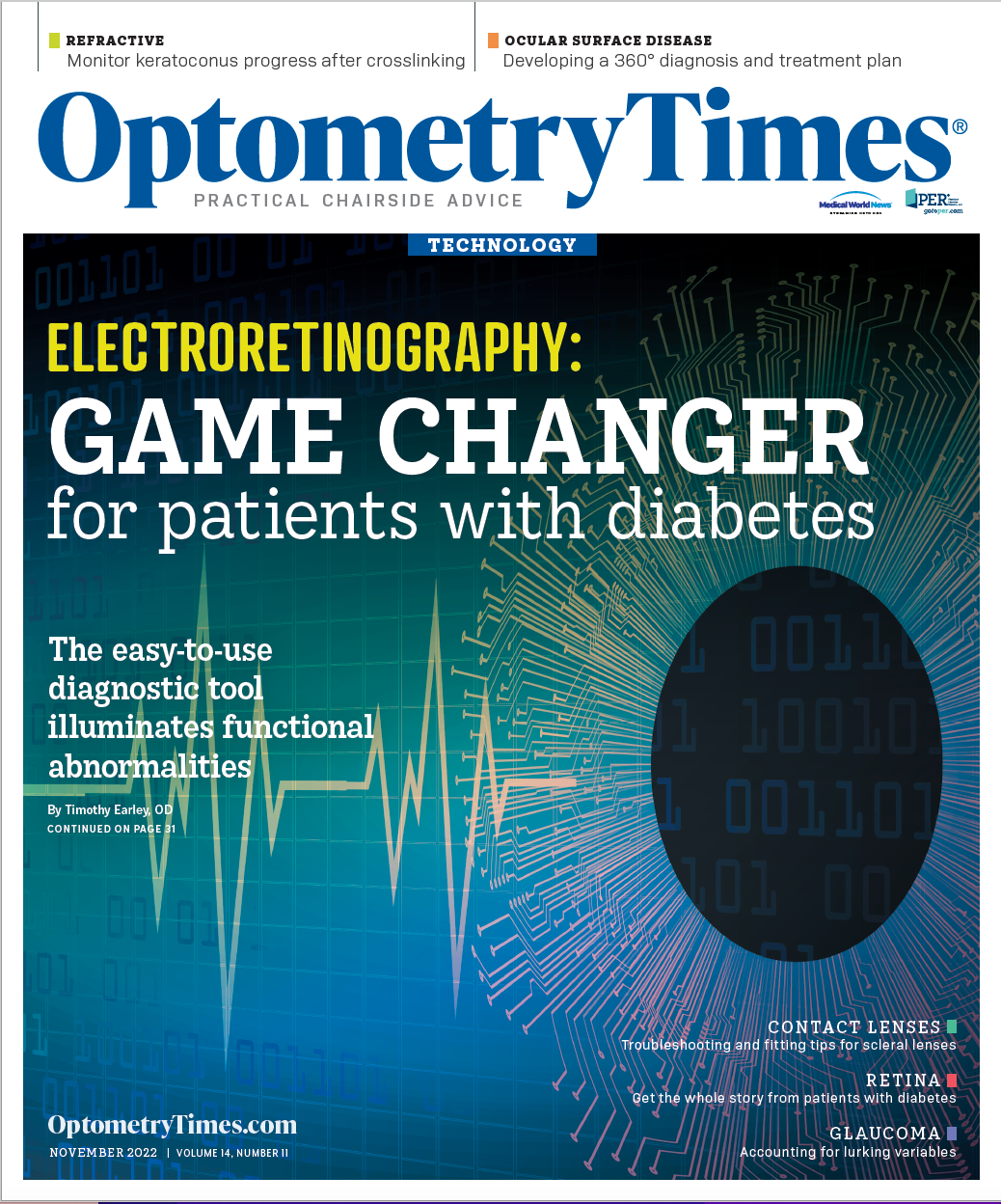Words matter: Update how you talk to your patients
As technology advances and choices grow, you need to personalize patients’ options.

Astute and loyal readers of my quarterly column may have noticed a theme over the years: the need to communicate. We have the ability to take our thoughts and acumen and dispense that knowledge so our patients understand the actions needed to maintain great vision. Simply stated, we must strive to accurately provide our patients with incisive diagnoses and therapies that make sense in the sometimes-senseless environment where we find ourselves.
Technology has a way of taking challenging problems and providing efficient solutions. However, new advancements also require more communication from health care professionals.
As child of the 1970s, I can recall being dropped off at the local mall with $1. I would play in the arcades, get a meal from McDonald’s, and still have money left over for gum. I know, right? Crazy. That said, my options at McDonald’s were limited to burgers, fries, and soda. Moreover, not having to think about my options made life a little simpler. Compare that experience with going to a diner or the Cheesecake Factory and deciding what you want, a daunting task made more difficult by the fear of choosing wrong. (As an aside, the chop house burger is the best thing on the Cheesecake Factory menu; fight me!)
Think of how much time we saved during the 2020 COVID-19 lockdown. Most of us woke up and put on the same pair of comfy sweats or athleisure we’d worn the day before. Compare that experience with choosing a television show to watch. My head feels like it is going to explode; I want to watch a new show, but it’s on Paramount+. I have Peacock, and now I need another channel? Honestly, it has made me cherish the past when choices were limited, and we didn’t have to think as much.
Don’t get me wrong; I understand that more choices lead to competition and innovation, providing less expensive and more accessible products to consumers. The explosion of advancement also brings the ability to be creative and personalize options.
In health care, we have seen generic medications made affordable for patients and new vehicles for medication allowing better tissue penetration, efficacy, and surgical advancement. As optometrists—the true frontline doctors of the eyes—we straddle the past and future every time we speak with our patients. Each year we are mandated to communicate what was, what is now, and what may be.
Optometry Times® is full of articles—some of which I have written—detailing new therapies that have made it through the rigorous FDA process and new diagnostic technologies to help differentiate the need for new therapies. Rarer conditions need our attention, but those can be referred to our specialized colleagues. It is the discussion of pervasive conditions that needs some fine-tuning and attention to sharpen our communication.
Do you still discuss contact lenses today the way you did 5 years ago? How about the way you discuss keratoconus? Presbyopia? Think about that last one. When we talked to patients about presbyopia in the past, it was with a heavy heart, delicate and avoidant. Now we provide pharmacological options, surgical options, contact lenses, and glasses as treatment. Choices!
Again, I get it—life was easier when we could say, “You can wear glasses or not. The choice is yours. See you next year.” Less time in the lane, less time to think, and we didn’t have to worry whether we made the right choice. But that is not why we practice optometry. If you have a dispensary, look at all the choices you provide to your patients.
An inevitable and unavoidable consequence to the eye is the damage UV light causes to this precious organ. This is not the only reason for the development of cataracts, but much like wrinkles, age spots, and graying hair, lens stiffening and sulfide bonding affect us all. This makes a discussion of cataracts one you should have every day with your patients.
The simple conversation about procedures such as cataract removal is accompanied by layers of options. For some, the myriad of options are a communication impediment resulting in apathy or ignorance. I must add my public service announcement at this moment: There is no such thing as ripe when it comes to the crystalline lens. If you are still using this terminology, stop! Thank you for coming to my TED talk, “Taking Optometry Out of the Farm: The Crystalline Lens Is Not a Fruit or Vegetable.”
The cataract is a progression that should be verbalized at each visit for patients 40 years or older (and perhaps for younger patients as well). These conversations should be centered on patient and optometrist. You know how it is easy to wake up and throw on the same scrubs every day? This repetition is simple because you do it every day, with some minor tweaks. Discussing cataracts can be the same routine, even with all the new options and choices.
When I evaluate a patient with presbyopia, I go through all the options that would fit into their lifestyle. I describe the crystalline lens as the culprit in this lifetime drama and express how extricating this villain from the scenario will benefit the patient. A little history helps to get my patients interested. I mention that in the past we would remove the intact hard lens—the cataract—with a large incision that would often leave the patient in the hospital with low odds of retaining great quality of vision.
However, at that time we waited until vision was poor—nothing ventured, nothing gained. Fortunately, we live in a time where advancements in cataract surgery provide surgeons with tools to break the lens into tiny pieces with a small incision, liquefy those pieces via ultrasound, and aspirate the lens.
Furthermore, we can use a laser to make the initial incision, open the capsule, and break the lens up prior to the ultrasound. The laser allows for more accuracy and safety when performing this modern-day miracle; however, it is not covered by insurance. This leads me to discuss financial options to replace the lens that has worn out its welcome.
The framing of this conversation is predicated on the customization of the surgery lens choices. Ocular anatomy, goals, use of spectacles, and personalities differ, so find out what makes each patient unique. You may think because you are not performing the procedure, you are not positioned to guide a patient’s decisions. However, the opposite is true. The optometrist knows their patient, watches them get excited about or show disdain toward new technology, determines the cost-benefit ratio, and builds a trust that most surgeons can only hope to achieve. Therefore, optometrists may be the most qualified medical professionals for customized discussions about phakic intraocular lens options.

Unfortunately, this discussion is peppered with bias, such as asking the Cheesecake Factory waitstaff what they recommend. We don’t know them; they don’t know us. Rather, the waitstaff should ask questions, just as we should ask questions when recommending a permanent visual change to their ocular systems. “What do you like to do? Do you want to be glasses-free for most of your day? Would you be willing to have some glare and halo at night to avoid wearing glasses for near vision?” Let your patients know the best options to achieve these goals.
At this point, I hope you have come to some not-so-startling conclusions. Our words matter, and how we communicate can have vision-changing consequences. We need to start customizing our conversations and making them common and relatable. The lens is not produce, the chop house burger is fantastic, technology has made things better, and we should share all this with our patients. Our past was different but not always easier. In 30 years, I am sure someone will write an article about how easy we had it compared with life in 2052.

Newsletter
Want more insights like this? Subscribe to Optometry Times and get clinical pearls and practice tips delivered straight to your inbox.